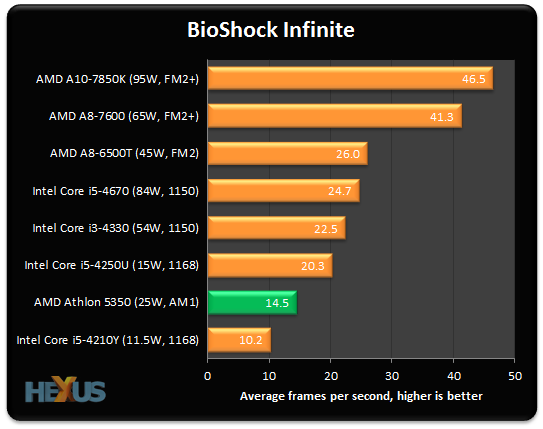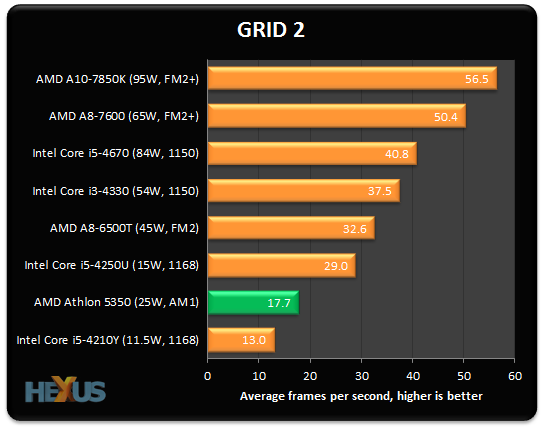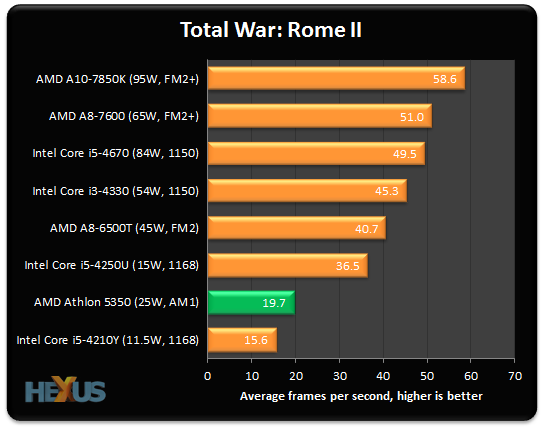Benchmarks: Gaming

We can't leave the processor alone without running some real-world games. Dialled down to a 720p resolution the Radeon R3 Graphics' hamstrung architecture is readily revealed.

Scaling is fairly linear - the A8-7600, for example, has 3x the muscle and produces 3x the performance.

We can't recommend anyone use the Radeon R3 Graphics for serious PC gaming. It's absolutely fine, though, for games typically included in the Humble Bundle series and free-to-play titles that aren't overly resource hungry.
You can get around the onboard graphics limitation by placing a mainstream graphics card in the x16 PCIe slot of any AM1-supporting motherboard. We did just that by adding in a low-power Nvidia GeForce GTX 750 Ti. Benchmarked with the same drivers as on release, here's how it compares to our usual test-chip, the vastly more powerful Intel Core i7-4770K used in our graphics rig each time a new GPU is reviewed.
1080p Gaming Performance (Average FPS) using GeForce GTX 750 Ti |
|||||
|---|---|---|---|---|---|
| Game | Image Preset | ||||
AMD Athlon 5350 |
Intel Core i7-4770K |
||||
| 3DMark | Default Fire Strike | 3,359 |
3,924 |
||
| BioShock Infinite | Ultra Quality + DOF | 32.5 |
43.7 |
||
| GRID 2 | Maximum Quality | 42.0 |
54.2 |
||
There's no expectation that the Athlon 5350 can match the grunt of our test PC. That said, the numbers for the GeForce GTX 750 Ti aren't bad at 1080p - we'd happily game at maximum-quality settings on the Kabini platform.









